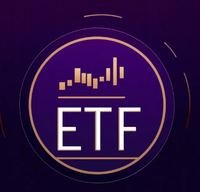ETF Pulse Check Navigating the VanEck Semiconductor ETFs Complex Terrain
ETF EdgeTuesday, Jun 17, 2025 9:12 pm ET
The VanEck Semiconductor ETF (SMH) is intricately tied to the MVIS US Listed Semiconductor 25 Index, targeting the semiconductor sector—a pivotal area in today's tech-driven economy. As a market-cap-weighted fund, invests in common stocks and depositary receipts of 25 of the largest US-listed semiconductor companies. This concentrated approach means that while the ETF benefits from the growth potential of the semiconductor industry, it also faces sector-specific risks. The fund's rules prioritize companies with at least 50% of their revenues from semiconductor production, creating a focused, yet volatile, investment landscape. The index's capping scheme ensures some diversification among the largest players, but the emphasis remains on significant market movers, reflecting the sector's current challenges and opportunities.
Basic Information
The VanEck Semiconductor ETF, known by its ticker code SMH, is managed by Van Eck Associates Corporation and was launched on December 20th, 2011. It carries an expense ratio of 0.35%, situating it moderately among its peers in terms of cost efficiency. The ETF is significantly concentrated, with its top 15 holdings—such as (NVDA), (TSM), and Broadcom (AVGO)—comprising over 90% of the portfolio, predominantly within the Information Technology sector, which represents 90.74% of its exposure. Despite the recent volatility in market returns, evidenced by a 6-month average return of -1.11%, the ETF has shown resilience with 1-year and 3-year average returns of 22.94% and 19.13%. However, this comes with heightened volatility, as seen in the 1-year and 3-year return standard deviations of 26.64% and 31.94%, respectively. The fund's 7-day and 30-day net flow ratios are negligible, indicating stability in investor sentiment, while its maximum drawdown figures portray significant risk during downturns.
News Summary
Recent headlines within the technology sector underscore a dynamic and sometimes tumultuous environment. Intel's announcement of significant layoffs, impacting up to 20% of its factory workforce, highlights the financial strains and restructuring efforts within the semiconductor industry. This development is part of broader tech sector challenges, including geopolitical tensions that could disrupt supply chains, such as the ongoing Israel-Iran conflict. Additionally, macroeconomic factors, including persistent inflation and cautious central bank policies, add layers of complexity to the industry's outlook. Despite these challenges, the demand for semiconductor products remains robust, driven by advancements in remote work technologies and the ongoing digital transformation across various sectors.
Analyst Rating: Sell
The VanEck Semiconductor ETF currently holds a "Sell" rating due to several critical concerns. Although its expense ratio is competitive, the fund's lack of significant capital flow momentum, as indicated by its net flow ratios, suggests stagnation in investor interest. The ETF's recent negative 6-month return contrasts sharply with its longer-term performance, raising questions about its short-term prospects. The volatility metrics further highlight the ETF's susceptibility to market fluctuations, reflecting the inherent risks of its concentrated holdings. With over 90% of its portfolio concentrated in the information technology sector, the ETF faces heightened exposure to sector-specific downturns, warranting a cautious stance on its future investment viability.
Backtest Scenario
The VanEck Semiconductor ETF (SMH) demonstrated notable resilience during the 2020 COVID-19 pandemic, initially suffering from the global economic slowdown and supply chain disruptions but ultimately recovering due to increased demand for semiconductor products driven by remote work and entertainment technologies. In contrast, Intel's recent layoff announcements reflect ongoing challenges within the company, including a 31% stock price drop over the past year despite attempts at restructuring. While the GF Value and analyst projections suggest potential upside for Intel, the SMH ETF's performance during the pandemic highlights its ability to rebound in challenging times. However, Intel's deeper operational issues underscore the complexities of navigating the semiconductor market landscape.
Risk Outlook
The VanEck Semiconductor ETF faces an intricate risk environment, heavily influenced by sector concentration, macroeconomic pressures, and geopolitical uncertainties. The ETF's significant exposure to Information Technology heightens its vulnerability to sector-specific volatility, as evidenced by Intel's recent workforce reductions. Macroeconomic risks, including inflationary pressures and interest rate policies, pose significant challenges, with potential impacts on semiconductor demand and production costs. Geopolitical tensions, such as those involving Iran, further complicate the global operations of semiconductor companies, while consumer spending downturns linked to tariffs contribute to demand-side uncertainties. Although liquidity risks appear stable, these interconnected factors necessitate vigilant monitoring to mitigate potential volatility impacts on investment strategies.
Conclusion
The VanEck Semiconductor ETF presents a compelling case for aggressive investors seeking exposure to the semiconductor sector, albeit with significant risks. Its concentrated portfolio offers high potential returns, but sector-specific and macroeconomic challenges require careful consideration. Investors should closely monitor geopolitical developments, interest rate policies, and sector performance metrics to navigate the ETF's complex risk landscape effectively.
Basic Information
The VanEck Semiconductor ETF, known by its ticker code SMH, is managed by Van Eck Associates Corporation and was launched on December 20th, 2011. It carries an expense ratio of 0.35%, situating it moderately among its peers in terms of cost efficiency. The ETF is significantly concentrated, with its top 15 holdings—such as (NVDA), (TSM), and Broadcom (AVGO)—comprising over 90% of the portfolio, predominantly within the Information Technology sector, which represents 90.74% of its exposure. Despite the recent volatility in market returns, evidenced by a 6-month average return of -1.11%, the ETF has shown resilience with 1-year and 3-year average returns of 22.94% and 19.13%. However, this comes with heightened volatility, as seen in the 1-year and 3-year return standard deviations of 26.64% and 31.94%, respectively. The fund's 7-day and 30-day net flow ratios are negligible, indicating stability in investor sentiment, while its maximum drawdown figures portray significant risk during downturns.
News Summary
Recent headlines within the technology sector underscore a dynamic and sometimes tumultuous environment. Intel's announcement of significant layoffs, impacting up to 20% of its factory workforce, highlights the financial strains and restructuring efforts within the semiconductor industry. This development is part of broader tech sector challenges, including geopolitical tensions that could disrupt supply chains, such as the ongoing Israel-Iran conflict. Additionally, macroeconomic factors, including persistent inflation and cautious central bank policies, add layers of complexity to the industry's outlook. Despite these challenges, the demand for semiconductor products remains robust, driven by advancements in remote work technologies and the ongoing digital transformation across various sectors.
Analyst Rating: Sell
The VanEck Semiconductor ETF currently holds a "Sell" rating due to several critical concerns. Although its expense ratio is competitive, the fund's lack of significant capital flow momentum, as indicated by its net flow ratios, suggests stagnation in investor interest. The ETF's recent negative 6-month return contrasts sharply with its longer-term performance, raising questions about its short-term prospects. The volatility metrics further highlight the ETF's susceptibility to market fluctuations, reflecting the inherent risks of its concentrated holdings. With over 90% of its portfolio concentrated in the information technology sector, the ETF faces heightened exposure to sector-specific downturns, warranting a cautious stance on its future investment viability.
Backtest Scenario
The VanEck Semiconductor ETF (SMH) demonstrated notable resilience during the 2020 COVID-19 pandemic, initially suffering from the global economic slowdown and supply chain disruptions but ultimately recovering due to increased demand for semiconductor products driven by remote work and entertainment technologies. In contrast, Intel's recent layoff announcements reflect ongoing challenges within the company, including a 31% stock price drop over the past year despite attempts at restructuring. While the GF Value and analyst projections suggest potential upside for Intel, the SMH ETF's performance during the pandemic highlights its ability to rebound in challenging times. However, Intel's deeper operational issues underscore the complexities of navigating the semiconductor market landscape.
Risk Outlook
The VanEck Semiconductor ETF faces an intricate risk environment, heavily influenced by sector concentration, macroeconomic pressures, and geopolitical uncertainties. The ETF's significant exposure to Information Technology heightens its vulnerability to sector-specific volatility, as evidenced by Intel's recent workforce reductions. Macroeconomic risks, including inflationary pressures and interest rate policies, pose significant challenges, with potential impacts on semiconductor demand and production costs. Geopolitical tensions, such as those involving Iran, further complicate the global operations of semiconductor companies, while consumer spending downturns linked to tariffs contribute to demand-side uncertainties. Although liquidity risks appear stable, these interconnected factors necessitate vigilant monitoring to mitigate potential volatility impacts on investment strategies.
Conclusion
The VanEck Semiconductor ETF presents a compelling case for aggressive investors seeking exposure to the semiconductor sector, albeit with significant risks. Its concentrated portfolio offers high potential returns, but sector-specific and macroeconomic challenges require careful consideration. Investors should closely monitor geopolitical developments, interest rate policies, and sector performance metrics to navigate the ETF's complex risk landscape effectively.

Ask Aime: Will the VanEck Semiconductor ETF (SMH) benefit from Intel's workforce reduction?
Disclaimer: The news articles available on this platform are generated in whole or in part by artificial intelligence and may not have been reviewed or fact checked by human editors. While we make reasonable efforts to ensure the quality and accuracy of the content, we make no representations or warranties, express or implied, as to the truthfulness, reliability, completeness, or timeliness of any information provided. It is your sole responsibility to independently verify any facts, statements, or claims prior to acting upon them. Ainvest Fintech Inc expressly disclaims all liability for any loss, damage, or harm arising from the use of or reliance on AI-generated content, including but not limited to direct, indirect, incidental, or consequential damages.

Comments
No comments yet